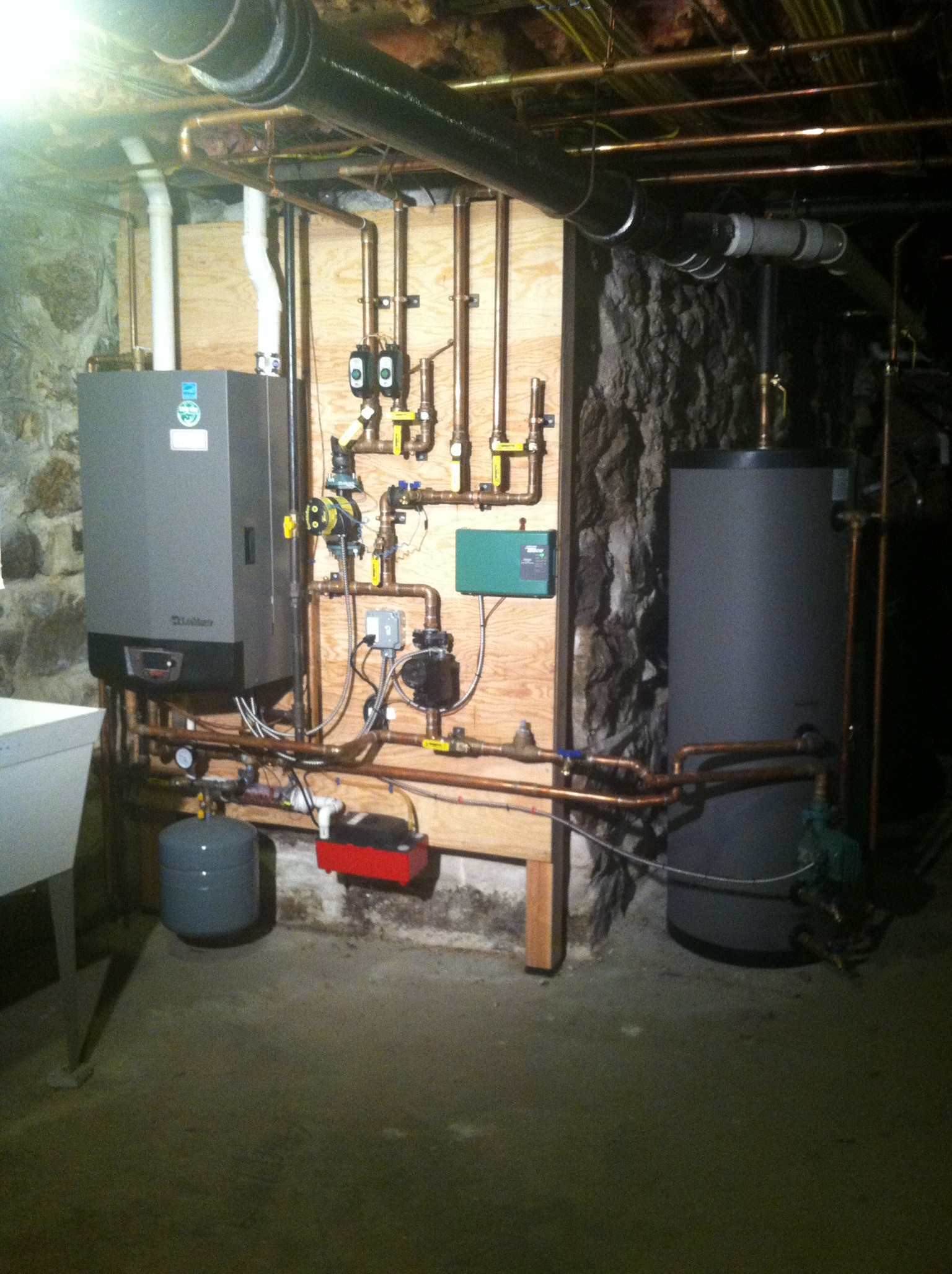hlv
Harry Voorhees
Last fall I had a new modcon boiler serving two fin-tube baseboard zones. I have a couple questions regarding the current circulator pump set up and whether it could be improved.
The system is a Lochnivar Knight WH55 boiler with Grundfos pump (UPS15-58FC) on the primary loop and a BumbleBee pump (Taco HEC-2) with temperature delta T sensor on the secondary loop with two zone values. There is also a DHW priority loop with indirect tank.

The delta T on the primary loop is typically less than 5F even with the boiler-manufacturer-supplied Grundfos pump set to its slowest of 3 fixed speeds. Consequently, given my outdoor reset curve (which is low enough, maintaining two-hour long burns) the boiler doesn't condense when the outdoor temperature is below 45F or so.
I recently asked the installer about improving that, and he proposed installing a Grunfos Magna variable speed circulator that uses the boiler's 10vDC output to maintain a 30F delta T. It's probably not worth the four-figure installation quote to gain ~5% in heating fuel efficiency, but perhaps the replacement pump would also save some electricity(?) and of course I'd like to see the boiler operating at its advertised 95% efficiency in months other than May and October.
Also, I don't understand the point of having a delta T control on the secondary loop. Currently the Bumblee pump is set to maintain a 16F delta T. The observed effect is that the circulator runs at one of two speeds: initially at 13.4 gpm when there is a call for heat, then once the loop warms up, at a steady 6.8 gpm whether 1 or 2 zones are on. My impression is that the increased speed is overkill and does not affect the amount of heat delivered to the baseboards. Is that true?
Any thoughts on whether the installer's proposal is a good idea or are there cheaper alternatives? Also, can someone explain how maintaining a large delta T on the primary loop would affect average temperature and the delta t on the secondary loop? Should a different control mechanism (or none) be used on the secondary loop?
Thanks for any suggestions and insight!
Harry Voorhees
The system is a Lochnivar Knight WH55 boiler with Grundfos pump (UPS15-58FC) on the primary loop and a BumbleBee pump (Taco HEC-2) with temperature delta T sensor on the secondary loop with two zone values. There is also a DHW priority loop with indirect tank.

The delta T on the primary loop is typically less than 5F even with the boiler-manufacturer-supplied Grundfos pump set to its slowest of 3 fixed speeds. Consequently, given my outdoor reset curve (which is low enough, maintaining two-hour long burns) the boiler doesn't condense when the outdoor temperature is below 45F or so.
I recently asked the installer about improving that, and he proposed installing a Grunfos Magna variable speed circulator that uses the boiler's 10vDC output to maintain a 30F delta T. It's probably not worth the four-figure installation quote to gain ~5% in heating fuel efficiency, but perhaps the replacement pump would also save some electricity(?) and of course I'd like to see the boiler operating at its advertised 95% efficiency in months other than May and October.
Also, I don't understand the point of having a delta T control on the secondary loop. Currently the Bumblee pump is set to maintain a 16F delta T. The observed effect is that the circulator runs at one of two speeds: initially at 13.4 gpm when there is a call for heat, then once the loop warms up, at a steady 6.8 gpm whether 1 or 2 zones are on. My impression is that the increased speed is overkill and does not affect the amount of heat delivered to the baseboards. Is that true?
Any thoughts on whether the installer's proposal is a good idea or are there cheaper alternatives? Also, can someone explain how maintaining a large delta T on the primary loop would affect average temperature and the delta t on the secondary loop? Should a different control mechanism (or none) be used on the secondary loop?
Thanks for any suggestions and insight!
Harry Voorhees
